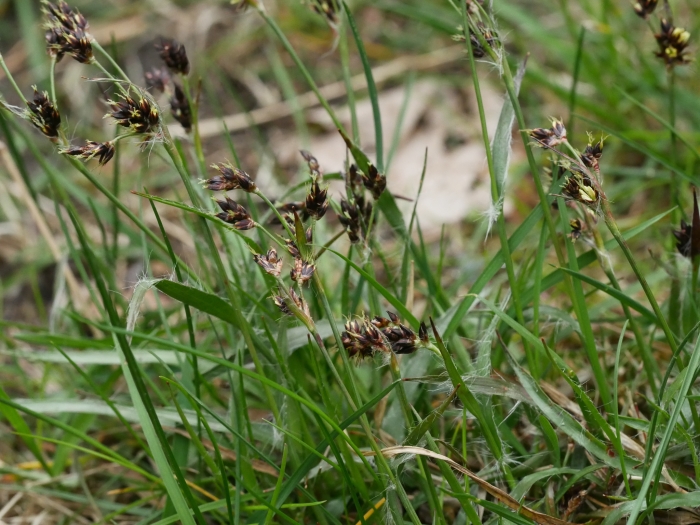Field Wood-Rush
(Luzula campestris)
Field Wood-Rush (Luzula campestris)
/
/

Alexis
CC BY 4.0
Image By:
Alexis
Recorded By:
Copyright:
CC BY 4.0
Copyright Notice:
Photo by: Alexis | License Type: CC BY 4.0 | License URL: http://creativecommons.org/licenses/by/4.0/ | Rights Holder: Alexis | Publisher: iNaturalist | Date Created: 2021-04-30T17:19:49-07:00 |
























Estimated Native Range
Summary
Luzula campestris, commonly known as field wood-rush, Good Friday grass, or sweep’s brush, is a perennial herb native to temperate grasslands and meadows across Europe, extending to the Caucasus. It typically grows 2-6 inches tall and spreads both vegetatively through stolons and by seed. The plant forms dense tufts of narrow, cylindrical leaves, and its inconspicuous brown flowers bloom from March to June in the northern temperate zone. The flowers are arranged in small clusters at the top of slender, upright stems.
Field wood-rush is valued for its ability to thrive in poor soils and its use as ground cover in wildflower meadows and naturalistic plantings. It is also a popular choice for creating a ’meadow look’ in lawns and golf courses due to its low growth habit. This plant prefers full sun to part shade and can tolerate a range of soil types, provided they are well-drained. While it is generally low maintenance, it can become a persistent weed in ornamental turf and may require management to prevent it from becoming too invasive. In some regions, it has been introduced and can outcompete native species, so care should be taken when planting it outside its native range.CC BY-SA 4.0
Field wood-rush is valued for its ability to thrive in poor soils and its use as ground cover in wildflower meadows and naturalistic plantings. It is also a popular choice for creating a ’meadow look’ in lawns and golf courses due to its low growth habit. This plant prefers full sun to part shade and can tolerate a range of soil types, provided they are well-drained. While it is generally low maintenance, it can become a persistent weed in ornamental turf and may require management to prevent it from becoming too invasive. In some regions, it has been introduced and can outcompete native species, so care should be taken when planting it outside its native range.CC BY-SA 4.0
Plant Description
- Plant Type: Grass
- Height: 0.5-1 feet
- Width: 0.5-1 feet
- Growth Rate: Moderate
- Flower Color: N/A
- Flowering Season: Spring
- Leaf Retention: Evergreen
Growth Requirements
- Sun: Full Sun, Part Shade
- Water: Medium
- Drainage: Medium, Slow
Common Uses
Deer Resistant, Drought Tolerant, Groundcover, Low Maintenance, Rabbit Resistant
Natural Habitat
Temperate grasslands and meadows across Europe, extending to the Caucasus
Other Names
Common Names: Sweep’s Brush, Good Friday Grass
Scientific Names: , Luzula campestris, ? campestre, Cyperella campestris, Cyperella campestris, Gymnodes campestris, Gymnoides campestris, Juncodes campestre, Juncoides campestre, Juncoides campestris
GBIF Accepted Name: